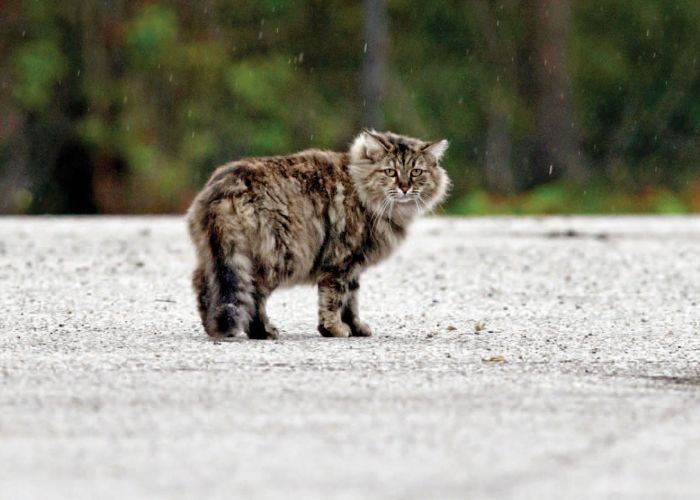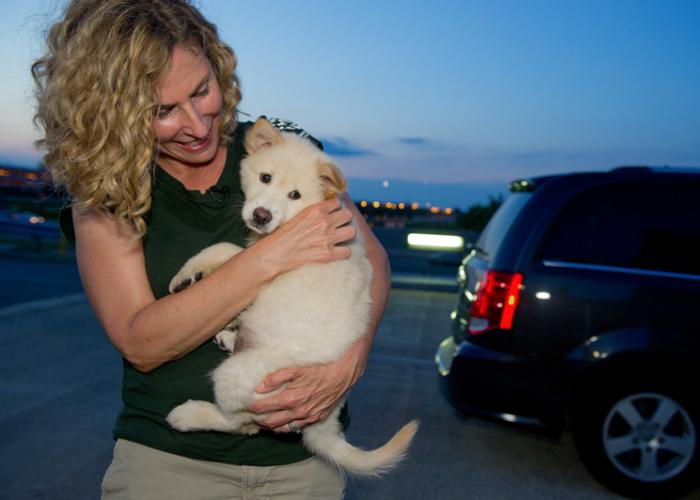Why trap-neuter-return?
A reluctant cat lady on getting motivated to help community cats
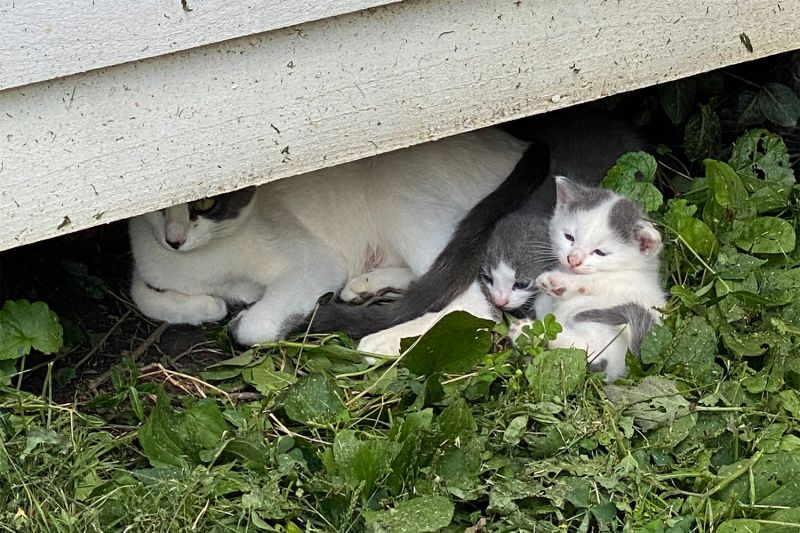
“Are you the cat lady?”
This is how strangers greet me. They’ve seen me driving down their street, cat traps and cases of canned food piled high in the back of my Subaru. They’ve seen me walking around at odd hours and heard about me from their neighbors. After nearly 25 years immersed in trap-neuter-return, I’ve become resigned to my cat lady identity.
I used to resist it. “No, I’m a spay/neuter advocate,” I would say. “And besides, I’ve always been more of a dog person.”
Everyone wants to be understood for who they truly are, and “cat lady” never fit my self-image as a compassionate pragmatist performing an important community service. Ego aside, I want people to view TNR the way I do: not as a cute hobby or strange obsession but as a commonsense solution that benefits people and animals.
My volunteer work with animals started in the mid-’90s when I began helping out at a rural dogs-only county shelter that was underfunded and overwhelmed. I spent most of my free time caring for fosters, transporting pups to adoption outings and frantically looking for homes for those at the top of the weekly euthanasia list. It was worthwhile work, but I was running myself ragged trying to save a handful of animals here and there. I wanted to address the root causes of animal overpopulation.
TNR provided the path for me to do just that.
This doesn’t mean I float through each week on a high of achievement. Trapping cats, working with caretakers and troubleshooting problem situations is hard work, and the payoffs vary. Some weekends I’ll get a dozen or more cats sterilized; other times, I’ll spend countless frustrating hours trying to catch that one last elusive feline in a colony.
Those are the times I give myself a pep talk and mentally recite the reasons I do this work.
“I recently trapped 11 cats whose caretakers had given away 72 kittens in recent years. ... A weekend spent trapping 11 cats is a small investment of time and money to prevent an additional 72 kittens from being born to compete in the crowded market for homes.”
Population management. This one seems obvious, but being out in the field, talking with caretakers, brings it home in a big way. I recently trapped 11 cats whose caretakers had given away 72 kittens in recent years. It’s a common scenario, and I always think of my rescue friends who invest enormous time, effort and emotional energy into fostering cats and kittens, nursing them back to health and finding them homes. I hear about the midnight trips to the emergency vet, the heartbreak when a kitten doesn’t survive, the constant pressure to find adopters and make room for yet another animal in need. A weekend spent trapping 11 cats is a small investment of time and money to prevent an additional 72 kittens from being born to compete in the crowded market for homes.
Shelter support. When I started doing TNR, the animal shelter in my town had a reputation. Staff members were surly, and turnover was high. It wasn’t hard to see why. While struggling to find homes for the adoptable dogs and cats in their care, the shelter was largely functioning as nuisance animal control for thousands of feral cats and kittens each year. They came in traps, carriers and rusted dog crates and went straight to the euthanasia room. And the next day would be no different, because no one was addressing the source of the problem.
Shelters have made a lot of progress since then, but community cats and neonatal kittens are still among their largest ongoing challenges. If we want our shelters to be staffed by positive, caring people, we need to minimize the emotional stresses of their jobs, and that includes sparing them the difficult, demoralizing experience of ending the lives of otherwise healthy animals.
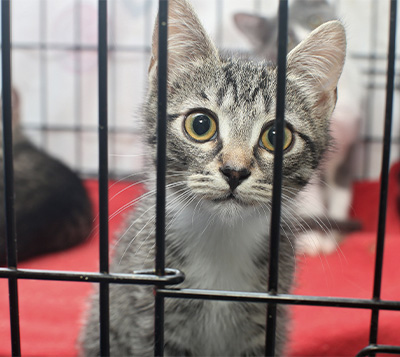
Conserving resources. Pat came on my radar last year after she delivered several litters and unsocialized teenage cats to the shelter. I learned that while she had given away “hundreds of kittens” over the years, Pat had finally exhausted her contacts and turned to shelter surrenders as a way to manage her colony numbers.
It took me and two other volunteers several weekends to trap and sterilize the 53 community cats who lived in her backyard. The clinic bill was nearly $3,000—a significant cost for the grassroots rescue organization I volunteer with, but a true bargain when I remember that a single litter of four kittens with pneumonia cost the group an equal amount in veterinary bills.
Bottom line: An estimated 75% of cats and kittens surrendered to shelters are community cats or their offspring. Kittens are particularly expensive and labor-intensive—creating a huge drain on local animal welfare resources and leaving less money and time for pet owner support programs, shelter enrichment, rehab for pets with behavioral or medical needs, and more.
Reducing invisible suffering. Shelter numbers are just the tip of the tragedy. Early last year, I was canvassing a neighborhood when I met Sandy, who’d been feeding cats behind her home for over a decade. Sandy told me that she’d never worried about getting the cats fixed because until the previous summer, all the kittens died, and her numbers stayed fairly stable.
It’s a story I hear often. Most kittens born outside don’t survive to adulthood. That’s a lot of suffering—and completely preventable. Sandy’s 14 cats are now all sterilized, and its gives me peace of mind to know that no kittens are dying in her backyard.
Helping people. Many people start feeding outdoor cats because they can’t bear the thought of an animal going hungry (I’m with them on that!). But then new litters are born, and they find themselves in a no-good-deed-goes-unpunished situation. Some caretakers are at the limit of the number of cats they can afford to feed. Some are distressed by the plight of the kittens or the injuries common to intact males fighting over mates. Some are in hot water with their neighbors or homeowners association. They care about the cats and want to get them fixed; they just need a helping hand.
I like helping fellow animal lovers, people like Brian and Chelsea who contacted me last year, concerned about a colony of cats their neighbors were feeding. Over the summer, the couple hand-caught 15 kittens from the group, socialized them and found them homes. It was a difficult and expensive undertaking (involving one bite and two trips to the emergency vet), and they were desperate not to repeat it. People have a lot of stresses in their lives; I can help remove one of them. And I witness the enormous relief they feel when the cats are vaccinated and no longer producing kittens.
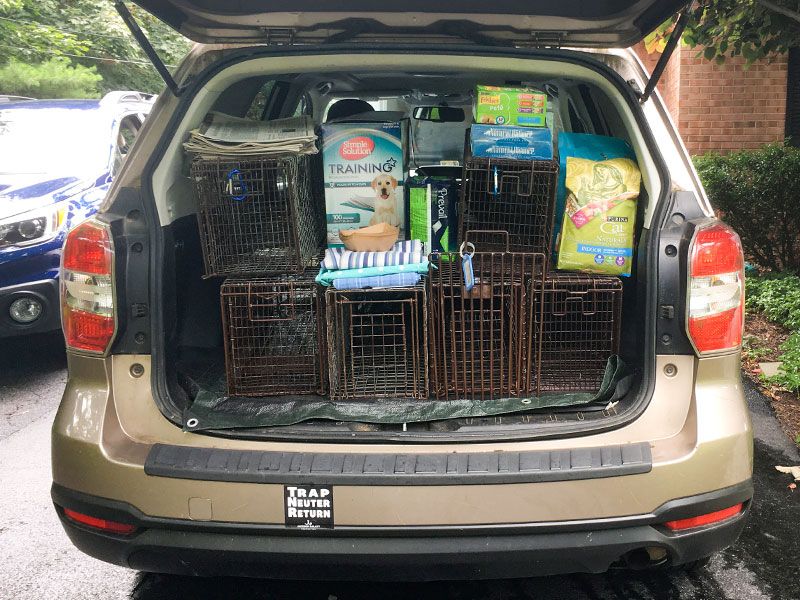
Finding purpose in an overwhelming field. When I was a teenager and visited the animal shelter, I said the same thing I hear a lot of people say: “I wish I could take them all.”
Well, I can’t and never will. Even if I win the lottery. Even if I could afford to purchase a 400-acre farm. By the time I reached my 20s and started volunteering at a shelter, the fantasy became “I wish I could spay them all.” And if I could go back in time and force my brain to absorb some science, I’d go to veterinary school and then spend the rest of my life sterilizing animals and paying off student loans. That’s not the path I followed, so doing the legwork that delivers animals to the spay/neuter clinic feels like the next best thing.
Trapping cats just takes time, patience and some basic people skills. In other words, nearly anyone can do it. Even with a full-time job. Even living in a small two-bedroom house with a partner who loves animals but has limits. In an average year, I can TNR about 200 cats, vastly improving their health, safety and quality of life and doing my part to ensure that fewer cats and kittens will need to be rescued in the future.
Over the years, TNR has permeated my lifestyle. I’ll likely never own a car that doesn’t carry a whiff of cat urine or a garage that doesn’t function as a trapping equipment depot. I’ll likely never be able to drive through a neighborhood without looking for signs of a cat colony that needs my services.
Inside my home, cats now outnumber dogs five-to-one. I’m surrounded by cat-themed kitchen towels, notepads, T-shirts, figurines and assorted knickknacks—all well-meaning gifts and a constant reminder that no matter what I say, I’ll never convince even my closest friends and family that I’m not obsessed with cats.
“Are you the cat lady?”
Yeah, I suppose I am.


